
On the afternoon of May 24th, the Tsinghua SIGS Center of Double Helix (CDH) and Shenzhen X Institute, in collaboration with the Tsinghua SIGS Institute of Materials Research, Institute of Data and Information Institute (iDI), and Institute of Ocean Engineering, organized activity titled “Unleashing Interdisciplinary, Original Innovation and Talent cultivation -a Series of Activities (1)& CDH X-Seminar Series of session 2.” The event took place on the first floor of the SIGS Information Building, Agent Tea (24-hour book bar)
The distinguished speakers for this event were Professor Zheng Shuquan, an Academician of the Chinese Academy of Sciences, founder of CDH, and founding president of the Shenzhen X Institute, and Professor Zhang Xiaoping, an Academician of the Canadian Academy of Engineering and the Dean of iDI. The event was moderated by SIGS Assistant Professor Dong Kaichen.
The guest speakers, Academician Zheng Quanshui and Academician Zhang Xiaoping specifically addressed the concerns of young teachers aged 30-45 during the event. They discussed important topics such as selecting research directions, identifying significant scientific problems, finding talented students, nurturing them, and fostering their curiosity.
Academician Zheng Quanshui, in particular, shared his valuable insights and personal experiences on how to cultivate innovation from the very beginning. His presentation revolved around the theme of “Scientific Research Problems: Selection and Condensation,” providing practical guidance and inspiration based on his own practical journey.
A.Lesson from the Cavendish Laboratory: Opportunity - Youth
The lesson from the Cavendish Laboratory emphasizes the importance of seizing opportunities during youth. It suggests that anything one is born with is considered normal and ordinary, as it is a natural part of the world. However, anything invented between the ages of 15 and 35 is seen as new, exciting, and revolutionary, and it may lead to a promising career. On the other hand, anything invented after the age of 35 is considered to go against the natural order of things.
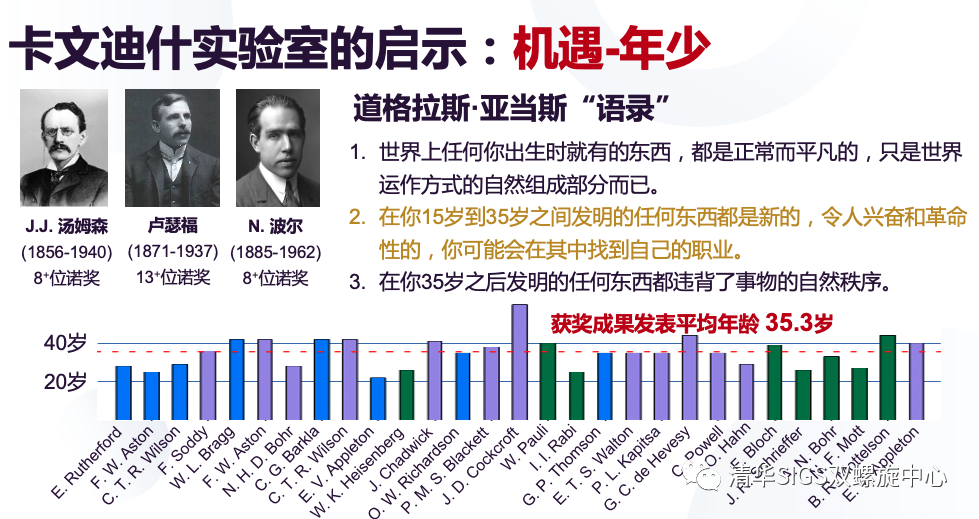
B.Cross-disciplinary research career, structural superlubricity: concept - Implementation – revolutionary application
Academician Zheng Quanshui has always followed his passion and pursued his interests throughout his research career. He has successfully integrated multiple disciplines, achieving remarkable accomplishments along the way. In 1980, he shifted his focus to mathematics and mechanics, conducting research on continuum mechanics and tensor function theory. From 2000 onwards, he ventured into technology innovation, and in 2009, he established the Tsien Class at Tsinghua University. In 2020, he founded the X Institute. Academician Zheng’s journey has been marked by significant milestones. From the groundbreaking GHz carbon nanotube oscillator in 2002 to the development of super-lubricity structures at various scales, including microscale, centimeter scale, and two-dimensional/two-dimensional materials, Device applications, 2D/bulk phase materials, he has dedicated 20 years to bringing these concepts to life and revolutionizing their applications.
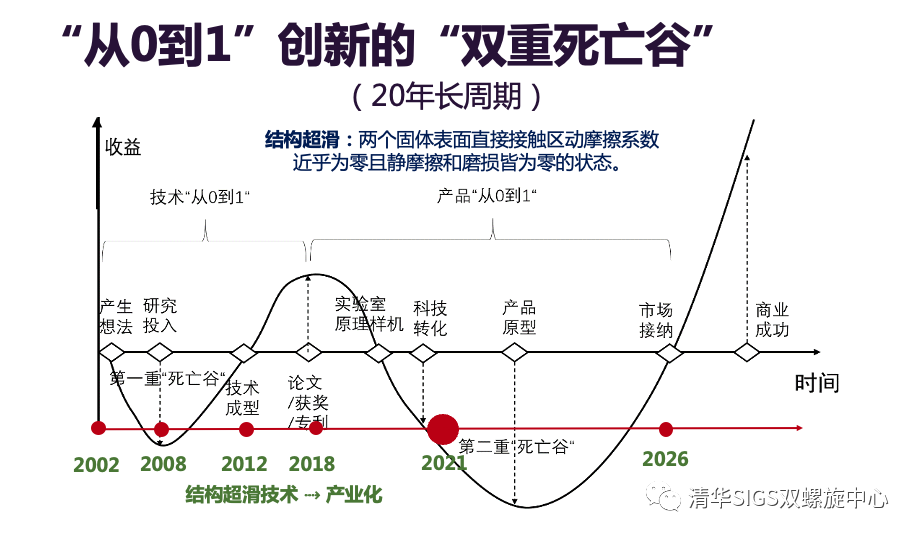
C.China faces a shortage of “0 to 1” innovative talent, and this can be attributed to three underlying factors.
The mindset of students is focused on short-term goals rather than long-term thinking. Life is often seen as a “marathon,” but many students adopt a “sprinting” mindset, prioritizing immediate achievements over long-term development.
A considerable number of students end up choosing the wrong major. According to a survey, approximately 80% of students make this decision incorrectly. Taking Tsinghua University as an example, which offers a wide range of 82 undergraduate majors, it is observed that a significant portion of students lack a clear understanding of their true passion or their desired field of study when they enter university. This lack of clarity contributes to the mismatch between students’ interests and the majors they choose.
The fast-paced changes of our time and the immense inertia of the education system are striking. Modern education systems trace their roots back to Germany two centuries ago, designed to produce individuals in large quantities, specifically tailored for the industrial age. However, as we navigate the uncertainties of career paths, especially in the era of artificial intelligence, the traditional education system is encountering growing difficulties in adequately preparing individuals for the future.
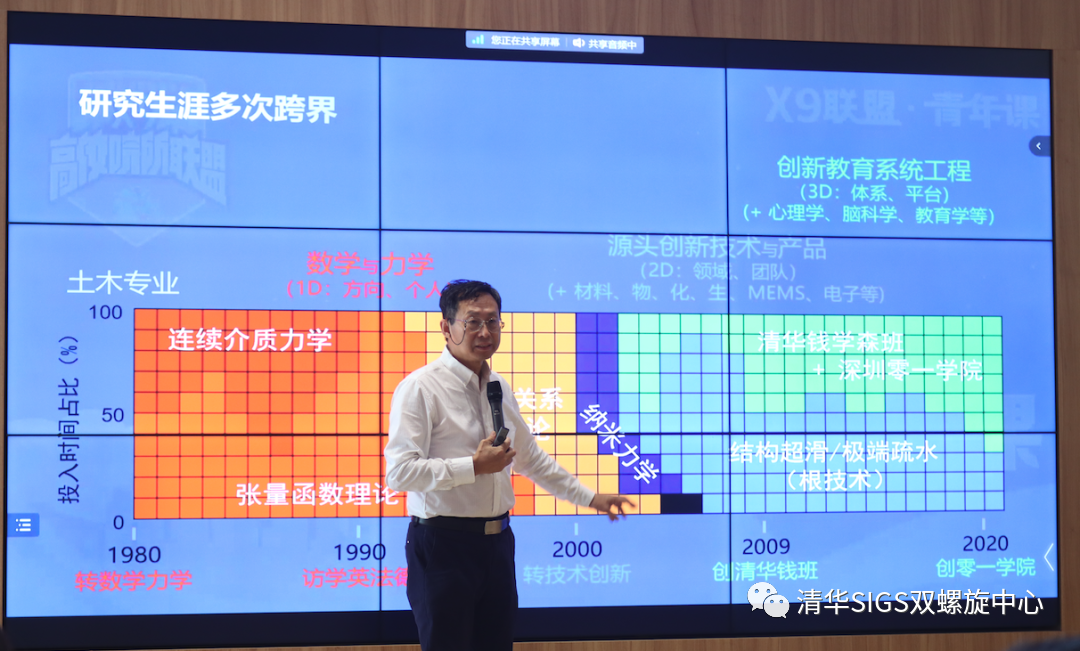
Zheng emphasized the importance for parents to assist their children in discovering their passions and wholeheartedly pursuing them. However, he acknowledged that finding one’s passion can be a challenging and enigmatic process. It requires time, exploration, and self-reflection to uncover what truly ignites a person’s interest and brings them fulfillment.
To address this need, Zheng established the Tsien Class in 2009. He recognized that traditional education primarily emphasizes the acquisition of known knowledge and skills, while the Tsien Class focuses on the exploration of the unknown and the development of the ability to innovate.
By adopting an open and interdisciplinary approach, providing flexible and personalized training, and fostering cooperative and innovative leadership skills, the Tsien Class enables students to identify and creatively solve problems in practical settings. This cultivates their ability to innovate from “0 to 1,” fostering a mindset of continuous exploration and innovation.
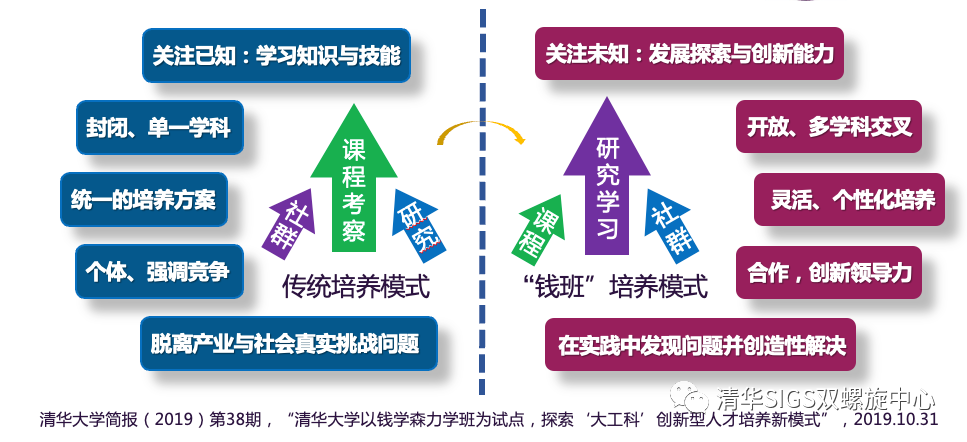
Academician Zhang Xiaoping delivered a comprehensive presentation on the topic of “Critical Thinking and Research,” where he delved into the process of identifying, defining, and resolving problems in scientific research.
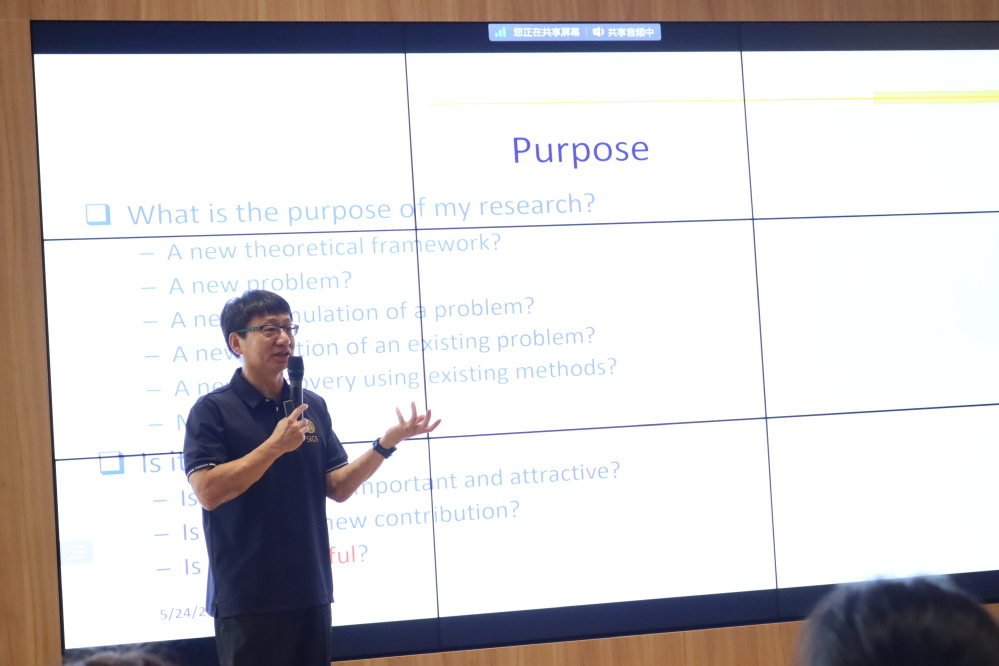
In his report, Academician Zhang Xiaoping primarily focused on explaining the seven steps involved in evaluating inferences.

1. Purpose
When delivering reports, many young teachers tend to focus on the technical aspects of their work, explaining how they conducted their research or carried out certain tasks. However, it is important to recognize that the audience is often more interested in understanding the purpose behind these actions. This is particularly relevant when working within a new theoretical framework or addressing a novel problem, as different approaches and perspectives may arise.
In this context, it becomes crucial for young teachers to consider the significance and potential contributions of their study. They should ask themselves questions such as “so what” and “who cares” to evaluate the broader implications of their work.
2. Question
During the research, it is valuable to ask oneself a series of questions. These may include inquiries about the specific problem being investigated, the connection between these problems and the research objective, the level of importance of the problem, and the necessary steps to overcome any difficulties encountered.
3. Concepts
Research requires a clear conceptual framework and a sense of creativity and curiosity. When conducting research, it is important to have a “fixed target” rather than a “moving target.” This means that the research should have a well-defined objective or goal that remains consistent throughout the process, allowing for focused and meaningful investigation.
4. Assumption
For example, in the field of image-based facial recognition, it is important to have a clear market positioning. This means that the product should perform well under specific lighting conditions or specific usage scenarios. Such positioning helps ensure that the product meets the needs of users and provides meaningful solutions.
At the same time, the universality of the product is also an important consideration. If a facial recognition product can be applied to a wide range of lighting conditions and usage scenarios, its market potential and contribution will be greater. However, if the product has a narrow scope of applicability and can only function under specific conditions, its market value and contribution may be relatively smaller.
Therefore, when developing an image-based facial recognition product, it is necessary to consider market demand, product performance, and universality in order to ensure that the product can have the maximum impact in practical applications and provide real value to users.
5. Information
In order to enhance the validity of a hypothesis and ensure the credibility of research findings, it is crucial to critically assess the quality and reliability of the sources used. This involves evaluating the relevance of the information to the hypothesis and determining if it provides sufficient support or evidence. By considering the applicability and reliability of the information, researchers can strengthen the validity of their hypothesis and establish a solid foundation for their study. This process of gathering and evaluating information contributes to the overall credibility and robustness of the research.
6. Point of View(Opposition)
It is important to consider the perspective of other researchers and explore how our own research differs from existing studies. By examining our research from a different angle, we can identify unique contributions and insights that set it apart. Additionally, if there is a lack of relevant research in a particular area, it is crucial to question why this gap exists and explore the potential reasons behind it. This critical analysis helps to ensure the novelty and significance of our research and encourages a deeper understanding of the research landscape.
7. Implications
In the final stages of research, it is essential to evaluate whether the obtained results are scalable and sustainable. This involves assessing whether the findings can be applied or extended to a larger context or population, and whether they can be maintained or replicated over time. Considering the scalability and sustainability of research results helps to determine their broader impact and practical implications. It ensures that the research outcomes can be effectively utilized and have long-term value in addressing the identified problem or research question.
In the concluding remarks of his presentation, Academician Zhang Xiaoping mentioned the concept of “Research Taste.” He emphasized the importance of considering whether our work is driven by an “inside view” or an “outside view.”
The “inside view” refers to pursuing research topics or projects that we personally find interesting and meaningful. It involves having an intrinsic motivation and passion for the subject matter, which can help cultivate our “Research Taste.” When we are genuinely interested in and passionate about our research, we are more likely to invest the necessary time, effort, and creativity to make significant contributions in our field.
On the other hand, the “outside view” involves considering the broader context and relevance of our research. It requires us to step back and evaluate the potential impact and significance of our work from an external perspective. By considering the needs of the scientific community, industry, or society as a whole, we can ensure that our research addresses relevant challenges and contributes to the advancement of knowledge or the betterment of society.
By balancing the “inside view” and the “outside view,” researchers can develop their “Research Taste” and pursue meaningful and impactful research. This approach allows for a harmonious integration of personal interests and external relevance, fostering a sense of purpose and fulfilment in our research endeavours.
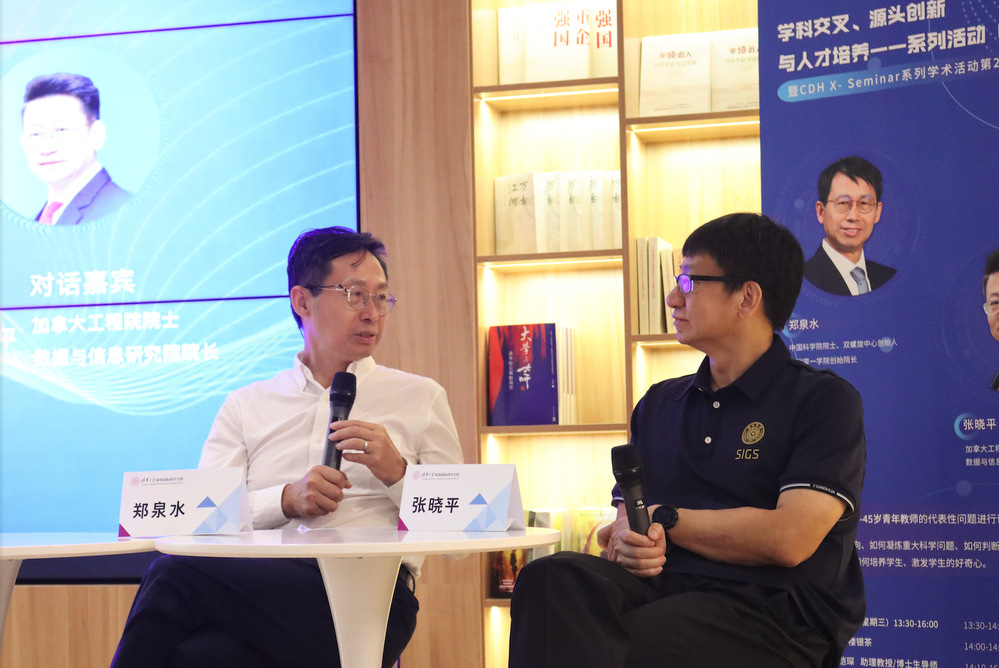
Zheng Quanshui emphasizes the importance of considering the significance and value of a research endeavour to society. When conducting a study, it is crucial to not only assess its immediate value but also evaluate its potential future impact. By dedicating time and effort to a research project, researchers can satisfy their scientific curiosity and potentially expand their capabilities, ultimately creating value for society. This forward-thinking approach ensures that research efforts contribute to the advancement of knowledge and have a lasting positive influence on the broader community.
The topic of finding students, nurturing students, and stimulating their curiosity is extensively discussed. Zheng Quanshui highlights the importance of a mutual relationship between students and teachers. In the process of student training, it is crucial to encourage students to explore and take on new challenges. This involves creating an environment where students feel supported and motivated to persist in their endeavors. Additionally, teachers play a vital role in helping students achieve success by providing guidance and setting more challenging tasks that gradually build students’ confidence. For young teachers, Zheng Shuquan suggests engaging in in-depth research while also ensuring a broad scope of study. This approach encourages teachers to delve deeply into specific areas of research while maintaining a broader perspective to foster comprehensive knowledge and understanding.
Zhang Xiaoping emphasizes the importance of understanding students’ interests and exploring their innovative qualities when it comes to student training. It is crucial to identify the problems that students are genuinely interested in and encourage them to pursue independent ideas. Zhang Xiaoping suggests that conducting research in a team does not hinder students’ independent thinking but rather provides an opportunity for collaboration and the generation of new ideas. Furthermore, for young teachers, interdisciplinary thinking should not be seen as a hindrance to independent thinking. Instead, it can serve as a catalyst for mutual promotion and the creation of novel concepts and approaches.




